Themed collection Crystal engineering for electrochemical applications

Crystal engineering for electrochemical applications
Welcome to this themed issue of CrystEngComm entitled: ‘Crystal engineering for electrochemical applications’.

CrystEngComm, 2020,22, 1498-1499
https://doi.org/10.1039/D0CE90017F
Vacancy-engineered catalysts for water electrolysis
Vacancy-engineered electrocatalysts showing various effects on improving performances toward water electrolysis.

CrystEngComm, 2020,22, 1500-1513
https://doi.org/10.1039/C9CE01883B
Recent advances in transition metal based compound catalysts for water splitting from the perspective of crystal engineering
A review of the recent progress on the transition metal based catalysts for water splitting with emphasis on crystal engineering.
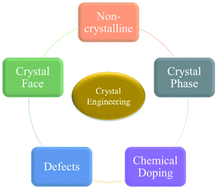
CrystEngComm, 2020,22, 1531-1540
https://doi.org/10.1039/C9CE01533G
A review on synthesis and engineering of crystal precursors produced via coprecipitation for multicomponent lithium-ion battery cathode materials
Interest in developing high performance lithium-ion rechargeable batteries has motivated research in precise control over the composition, phase, and morphology during materials synthesis of battery active material particles.
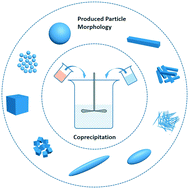
CrystEngComm, 2020,22, 1514-1530
https://doi.org/10.1039/C9CE00679F
Reducing the shuttle effect with the interactions of polar TiN and non-polar graphene for lithium–sulfur batteries
Chemical anchoring and facilitated transformation of polysulfides by polar titanium nitride nanoparticles and uniform distribution of sulfur by non-polar graphene showed efficient cooperative interactions for lithium–sulfur batteries.

CrystEngComm, 2020,22, 1555-1559
https://doi.org/10.1039/C9CE01469A
Concave PtCo nanooctahedra with high-energy {110} facets for the oxygen reduction reaction
For the first time, iminodiacetic acid serves as a morphology control agent for the synthesis of concave PtCo nanooctahedra.
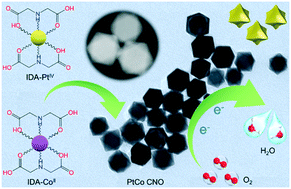
CrystEngComm, 2020,22, 1541-1546
https://doi.org/10.1039/C9CE01488H
SnS/N-Doped carbon composites with enhanced Li+ storage and lifetime by controlled hierarchical submicron- and nano-structuring
Hollow and dense hierarchical SnS microspheres coated with a nitrogen doped carbon layer were synthesised, tested and compared as anodes in lithium ion battery half cells.
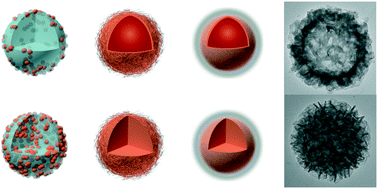
CrystEngComm, 2020,22, 1547-1554
https://doi.org/10.1039/C9CE01147A
Electron transfer in a semiconductor heterostructure interface through electrophoretic deposition and a linker-assisted method
Modulating the heterostructured interface of semiconductor nanocrystals is being widely explored to enhance the charge transfer rate in photoelectrochemical cells.
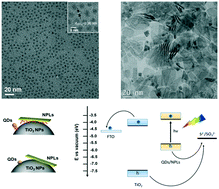
CrystEngComm, 2020,22, 1664-1673
https://doi.org/10.1039/C9CE01729A
From partial to complete neutralization of 2,5-dihydroxyterephthalic acid in the Li–Na system: crystal chemistry and electrochemical behavior of Na2Li2C8H2O6vs. Li
The 2,5-dihydroxyterephthalic acid (H4-p-DHT) is of special interest in the field of materials science because of the two symmetric sets of oxygen donor functional groups (i.e., β-hydroxy acid moieties).
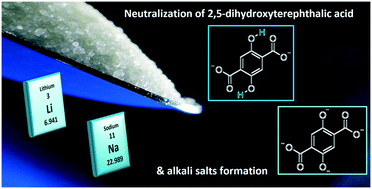
CrystEngComm, 2020,22, 1653-1663
https://doi.org/10.1039/C9CE01674K
Investigating the effects of activating agent morphology on the porosity and related capacitance of nanoporous carbons
We compare the microstructure of a lignin-based powdered activated carbon with a lignin-based electrospun mat and show how the reduction in size of the activating agent domains promotes the formation of microporosity and increases the resulting double layer capacitance.
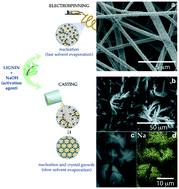
CrystEngComm, 2020,22, 1560-1567
https://doi.org/10.1039/C9CE01702J
Crystalline Al2O3 modified porous poly(aryl ether ketone) (PAEK) composite separators for high performance lithium-ion batteries via an electrospinning technique
The thermostability and wettability of a separator play key roles in improving the safety and electrochemical properties of lithium-ion batteries (LIBs).
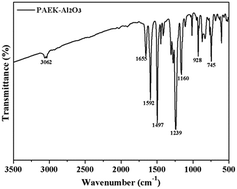
CrystEngComm, 2020,22, 1577-1585
https://doi.org/10.1039/C9CE01557D
Aligned ZnO nanorod@Ni–Co layered double hydroxide composite nanosheet arrays with a core–shell structure as high-performance supercapacitor electrode materials
Electrode materials are important components of supercapacitors and have a significant influence on the electrochemical properties.
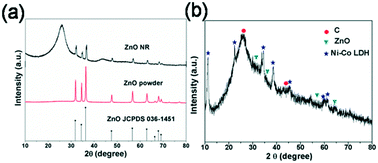
CrystEngComm, 2020,22, 1593-1601
https://doi.org/10.1039/C9CE01550G
High-performance spinel NiMn2O4 microspheres self-assembled with nanosheets by microwave-assisted synthesis for supercapacitors
Spinel NiMn2O4 microspheres self-assembled with nanosheets directly grown on a 3D nickel foam were successfully prepared by a facile microwave-assisted hydrothermal process.
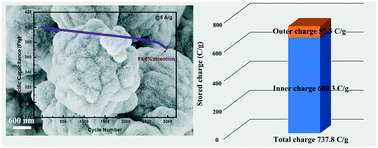
CrystEngComm, 2020,22, 1645-1652
https://doi.org/10.1039/C9CE01623F
Ionic liquid-mediated low-temperature formation of hexagonal titanium-oxyhydroxyfluoride particles
We present a low-temperature synthesis of Ti(OH)OF in ionic liquids, and its structure and electrochemical properties were elucidated.
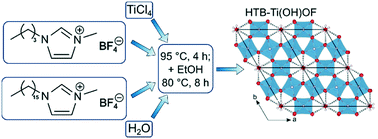
CrystEngComm, 2020,22, 1568-1576
https://doi.org/10.1039/C9CE01536A
NiS nanosheets with novel structure anchored on coal-based carbon fibers prepared by electrospinning for flexible supercapacitors
Elm seed-like NiS/coal-based carbon fibers were rationally designed and synthesized via a multistep transformation approach for flexible supercapacitors.
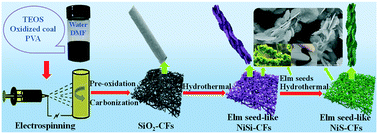
CrystEngComm, 2020,22, 1625-1632
https://doi.org/10.1039/C9CE01560D
Covalently anchoring cobalt phthalocyanine on zeolitic imidazolate frameworks for efficient carbon dioxide electroreduction
Transformation of CO2 into fuels has drawn great attention due to increasing carbon emission in recent years.
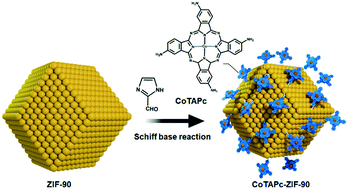
CrystEngComm, 2020,22, 1619-1624
https://doi.org/10.1039/C9CE01517E
Hollow nanostructures of metal oxides as emerging electrode materials for high performance supercapacitors
Comparative study of TMO based hollow and solid nanostructures for supercapacitor applications.
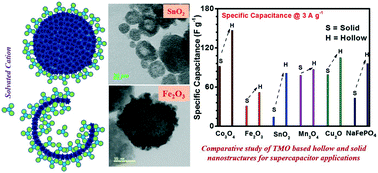
CrystEngComm, 2020,22, 1633-1644
https://doi.org/10.1039/C9CE01547G
Synthesis of self-assembled spindle-like CePO4 with electrochemical sensing performance
Three different morphologies of CePO4 nanocrystals (rods, columns, and spindle-like assembled nanosheets), spindle-like LaPO4, spindle-like PrPO4, and TbPO4 microspheres were successfully synthesized using a hydrothermal method.

CrystEngComm, 2020,22, 1610-1618
https://doi.org/10.1039/C9CE01380F
Rapid synthesis of hollow PtPdCu trimetallic octahedrons at room temperature for oxygen reduction reactions in acid media
Hollow PtPdCu trimetallic octahedrons were prepared under mild conditions, exhibiting enhanced activity toward the oxygen reduction reaction in acid media.

CrystEngComm, 2020,22, 1586-1592
https://doi.org/10.1039/C9CE01422E
Controllable crystal growth of a NiCo-LDH nanostructure anchored onto KCu7S4 nanowires via a facile solvothermal method for supercapacitor application
The application of NiCo-LDHs as electrode materials for supercapacitors has attracted widespread attention.
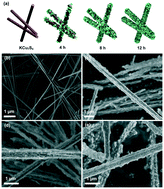
CrystEngComm, 2020,22, 1602-1609
https://doi.org/10.1039/C9CE01261C
About this collection
This themed issue is focused on crystal engineering strategies for the design of materials with superior properties for electrochemical applications, ranging from lithium-ion batteries and supercapacitors to electrocatalysts. It is guest-edited by Professor Georg Garnweitner (TU Braunschweig) and Professor Dongfeng Xue (Chinese Academy of Sciences).